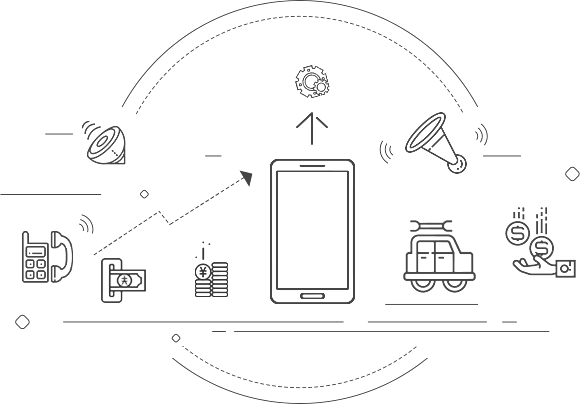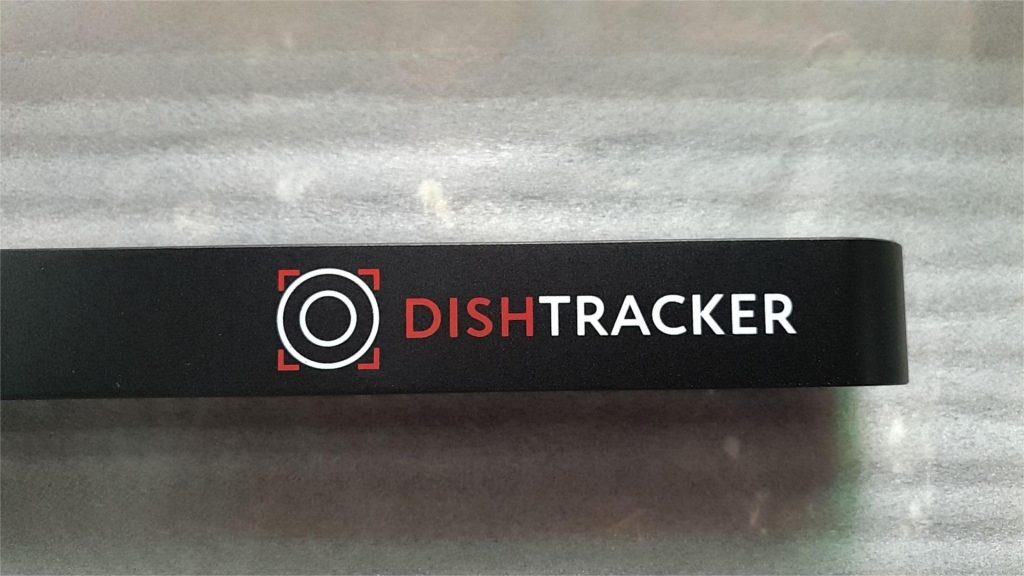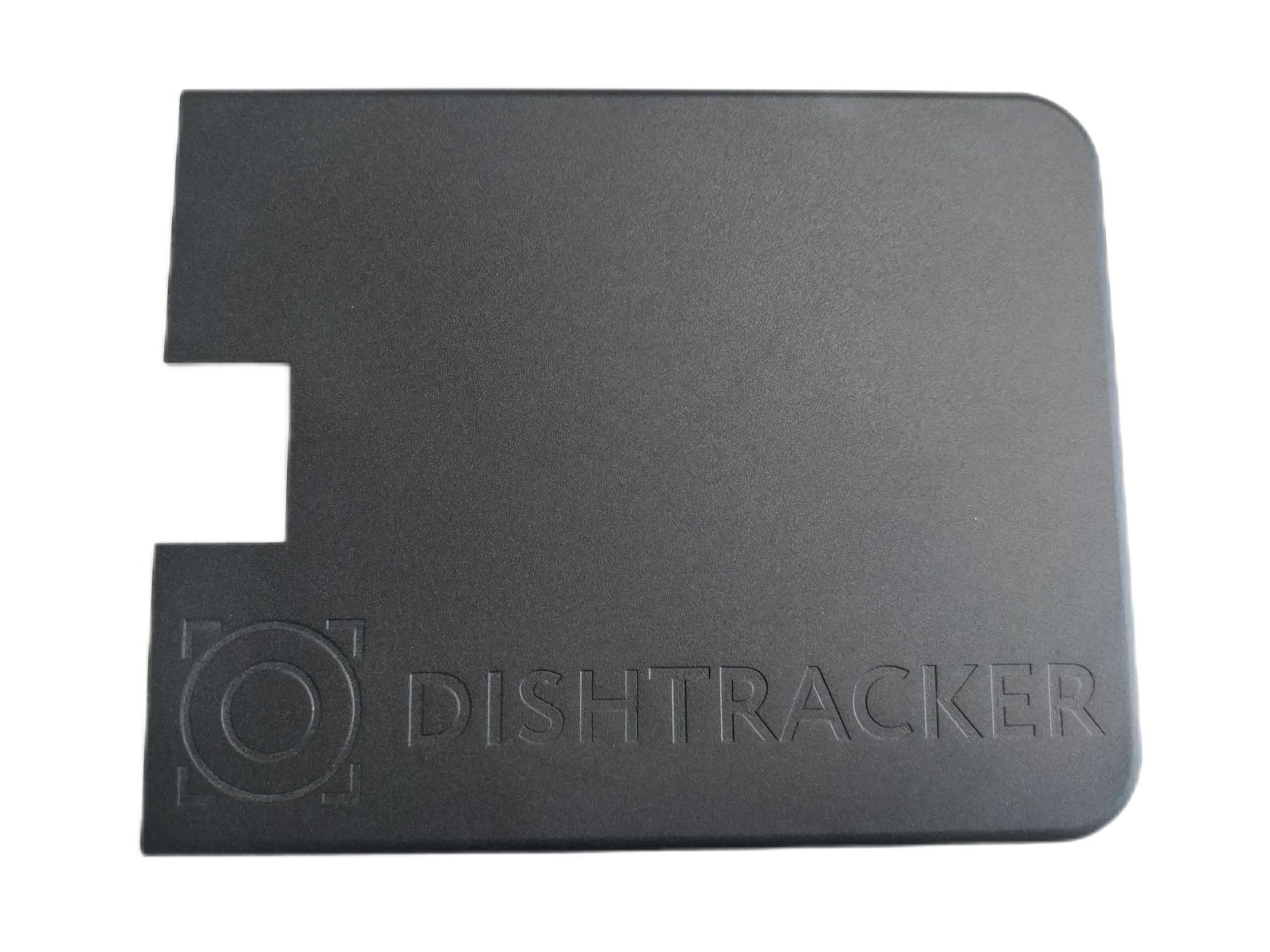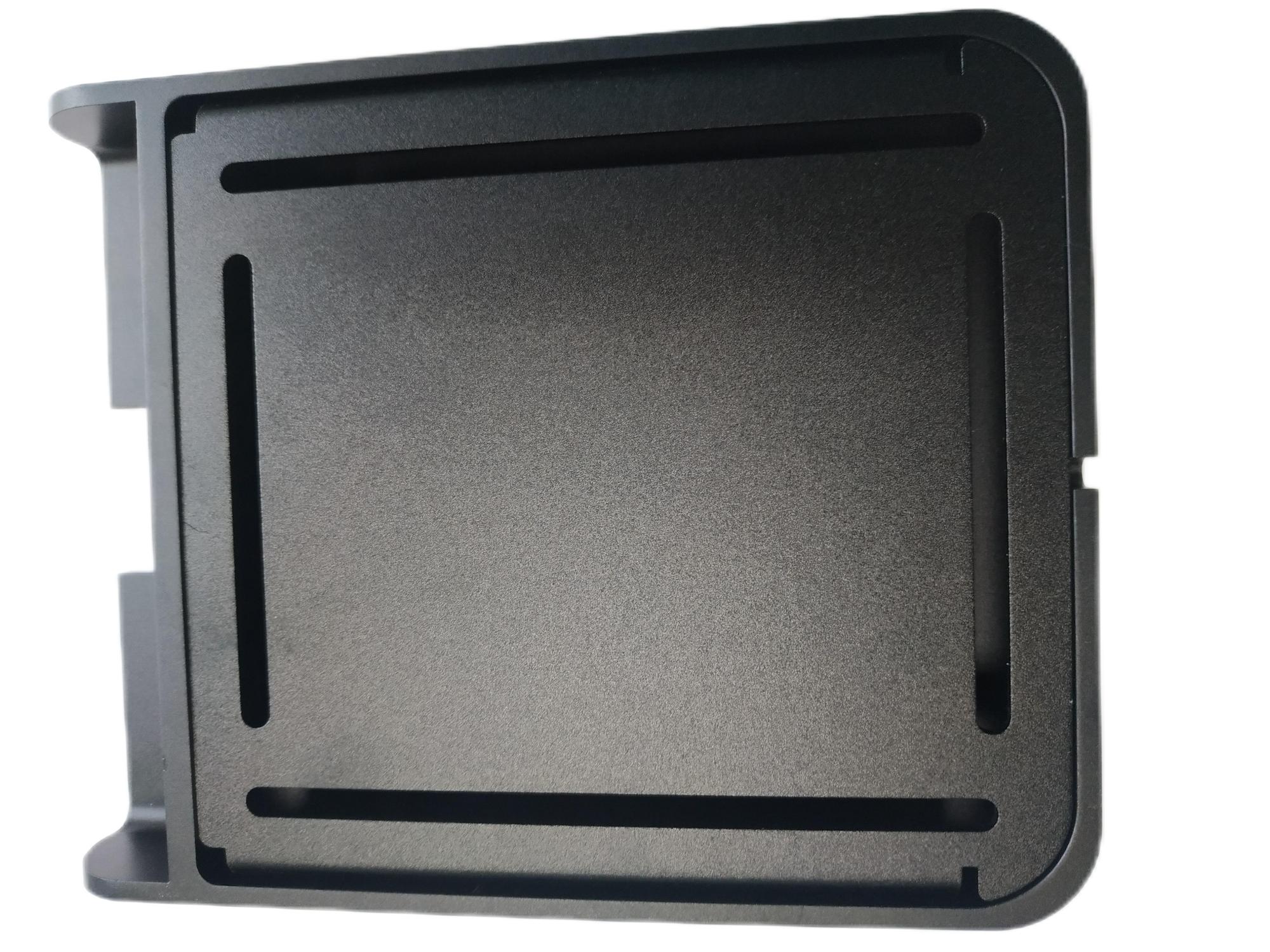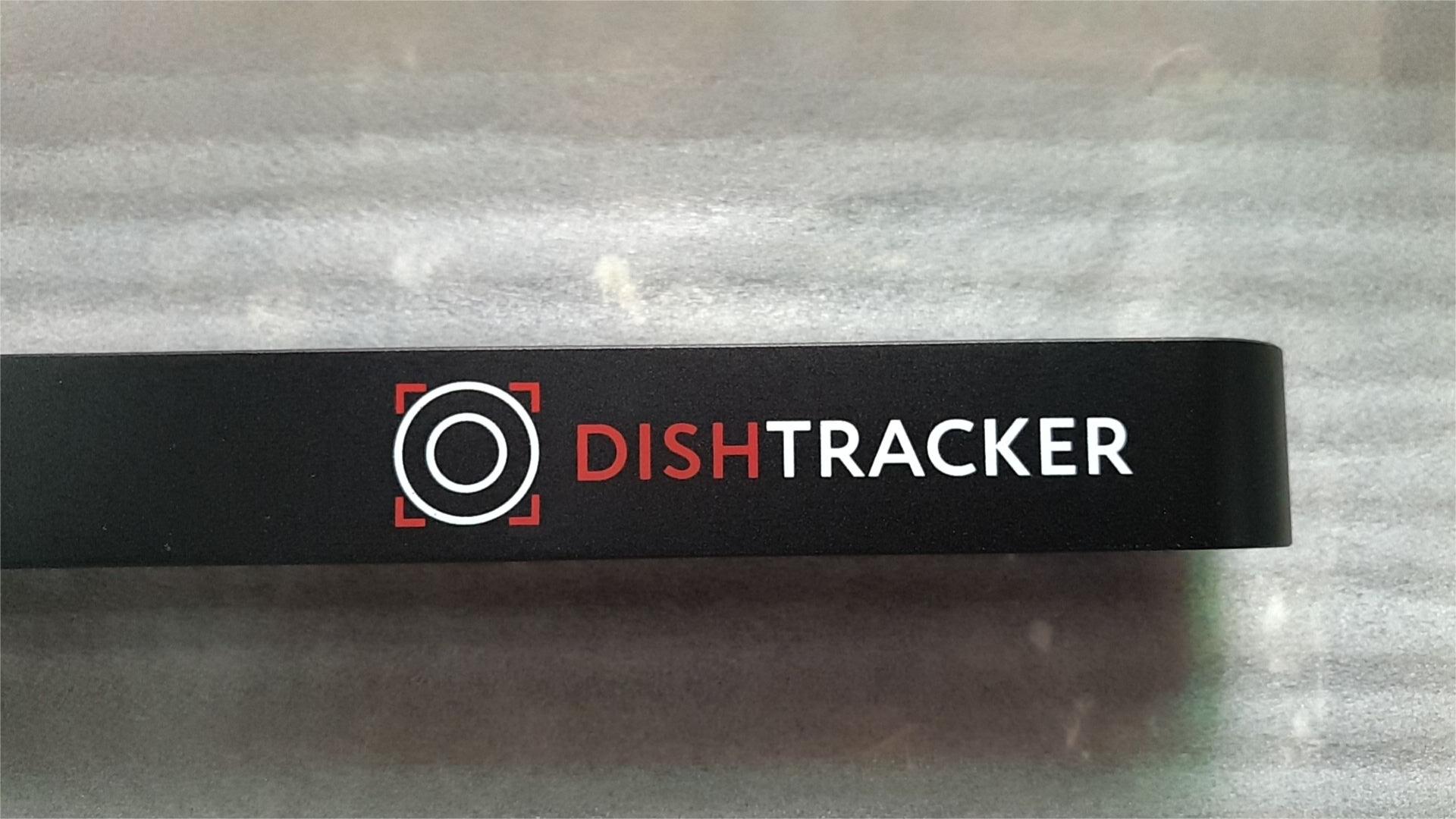Black Anodized CNC Machined Part With Laser Marked and Silkscreen Printed Logo
- Material: AL 6061-T6
- Size: 225.97*180*35 mm
- Process: CNC Milling
- Surface treatment: Black anodized, Laser marked, and Silkscreen printed logo
What Are the Benefits of Black Anodizing?
Black anodizing offers several advantages over untreated aluminum, making it a popular choice for many CNC machined parts. Here’s a breakdown of its key benefits:
- Increased Corrosion Resistance: The anodizing process creates a tough oxide layer on the aluminum’s surface. This layer acts as a barrier, protecting the underlying metal from corrosion, rust, and other environmental factors.
- Enhanced Wear Resistance: The anodized layer is also harder than the bare aluminum, making it more resistant to scratches, scuffs, and other forms of wear and tear. This is especially important for parts that will be subjected to frequent handling or contact with other objects.
- Cosmetic Enhancement: Black anodized aluminum has a sleek and sophisticated appearance. The black color is achieved through a dyeing process, and it can be uniform or have a slight matte finish. This aesthetic appeal makes black anodized parts a popular choice for applications where both form and function are important.
How Black Is the Black Anodizing Finish?
Black anodizing doesn’t achieve a single, universal level of blackness. The final shade can vary depending on a few factors:
- Dyeing method: There are three main techniques for dyeing black anodized aluminum: organic dyes, inorganic dyes, and electrolytic dyeing. Each method can produce slightly different black tones.
- Anodize layer thickness: The thickness of the anodized oxide layer can influence the depth and richness of the black color. Thicker layers tend to absorb the dye more effectively, resulting in a deeper black.
- Aluminum alloy: The specific type of aluminum alloy being anodized can also have a subtle effect on the final black color.
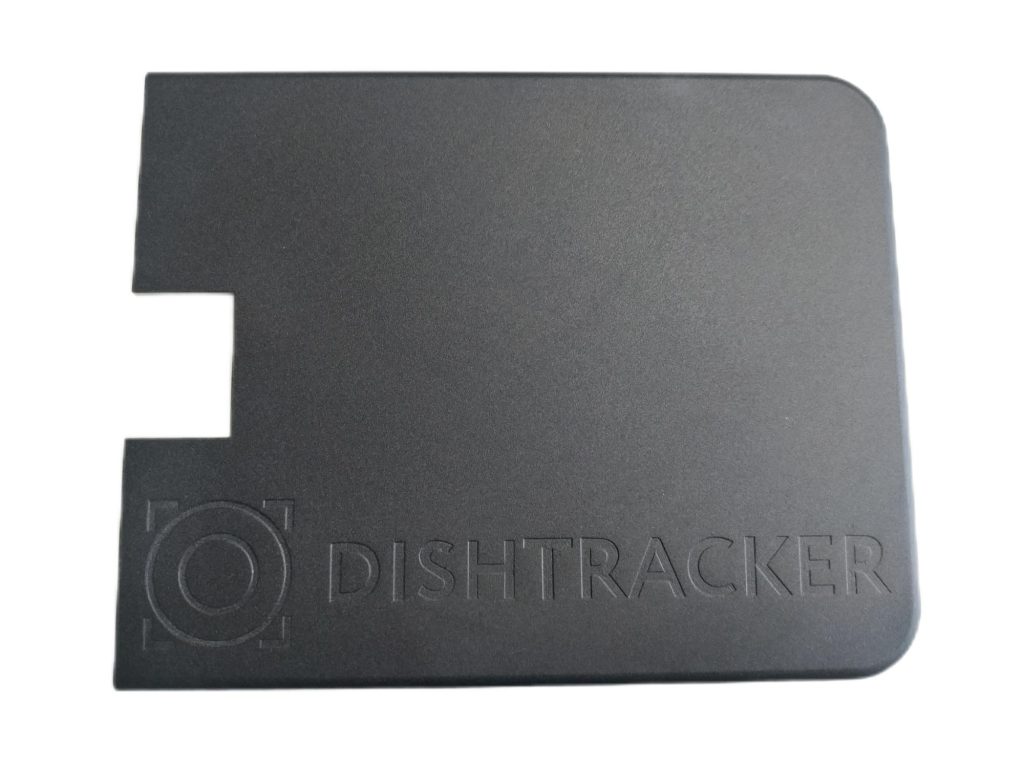
Will the Laser Marking Or Silkscreen Printing Affect the Part’s Strength?
In general, both laser marking and silkscreen printing have minimal impact on the overall strength of a black anodized CNC machined part. Here’s a breakdown of why:
Laser Marking
- Small Material Removal: The laser marking process removes a very small amount of material from the surface, typically just enough to expose the bare aluminum underneath the anodized layer. This removal is minuscule compared to the overall thickness of the part, so it has a negligible effect on strength.
- Localized Effect: The laser beam targets a specific area for marking, leaving the rest of the part unaffected. This localized heating from the laser might create slight changes in the material structure in the immediate vicinity of the marking, but these changes are minor and wouldn’t significantly compromise the part’s strength.
Silkscreen Printing
- Thin Ink Layer: Silkscreen printing applies a thin layer of ink onto the surface. This added weight is negligible and wouldn’t affect the part’s overall strength.
- Minimal Surface Disruption: The ink typically sits on top of the anodized layer and doesn’t penetrate deep into the aluminum. This minimizes any potential weakening of the material.
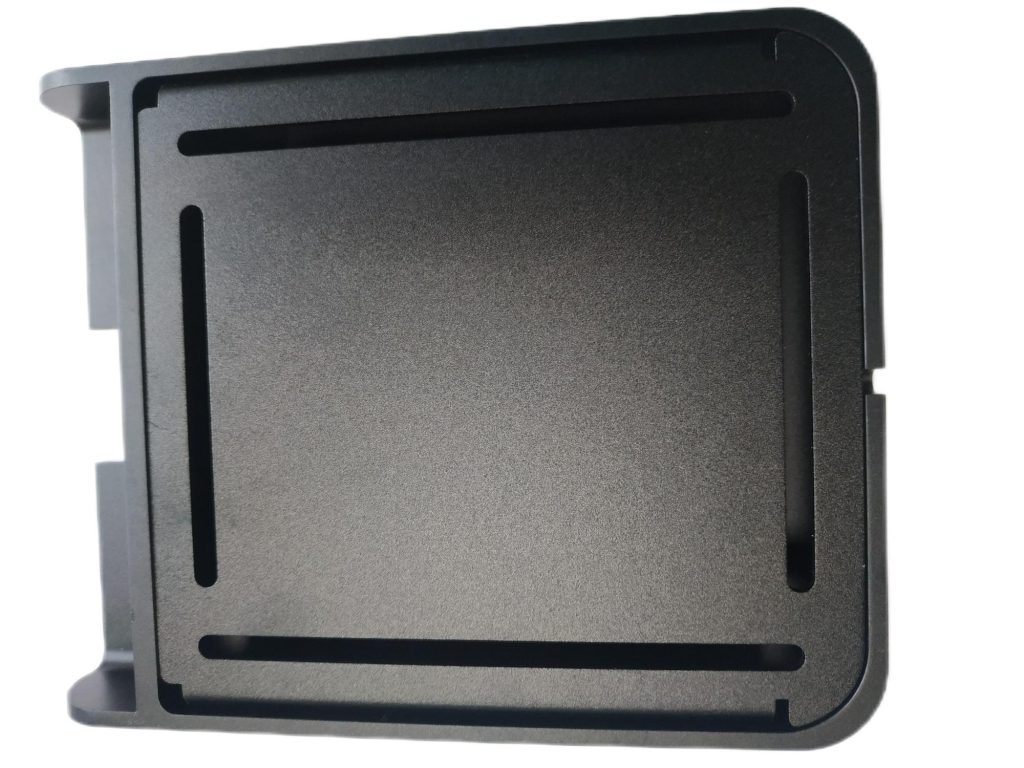
Why Choose JTR?
Chongqing Jin Te Rui Machine Co., Ltd. provides professional mass manufacturing and rapid prototyping services, including CNC machining, die casting, 3D printing, rapid tooling and injection molding, plastic and aluminum extrusion, sheet metal prototyping, and new product design and development integration. We can quickly implement your design thanks to our excellent manufacturing solutions, which can take only hours. This allows you to thoroughly test the product and make any changes to improve the design before it enters full production.
